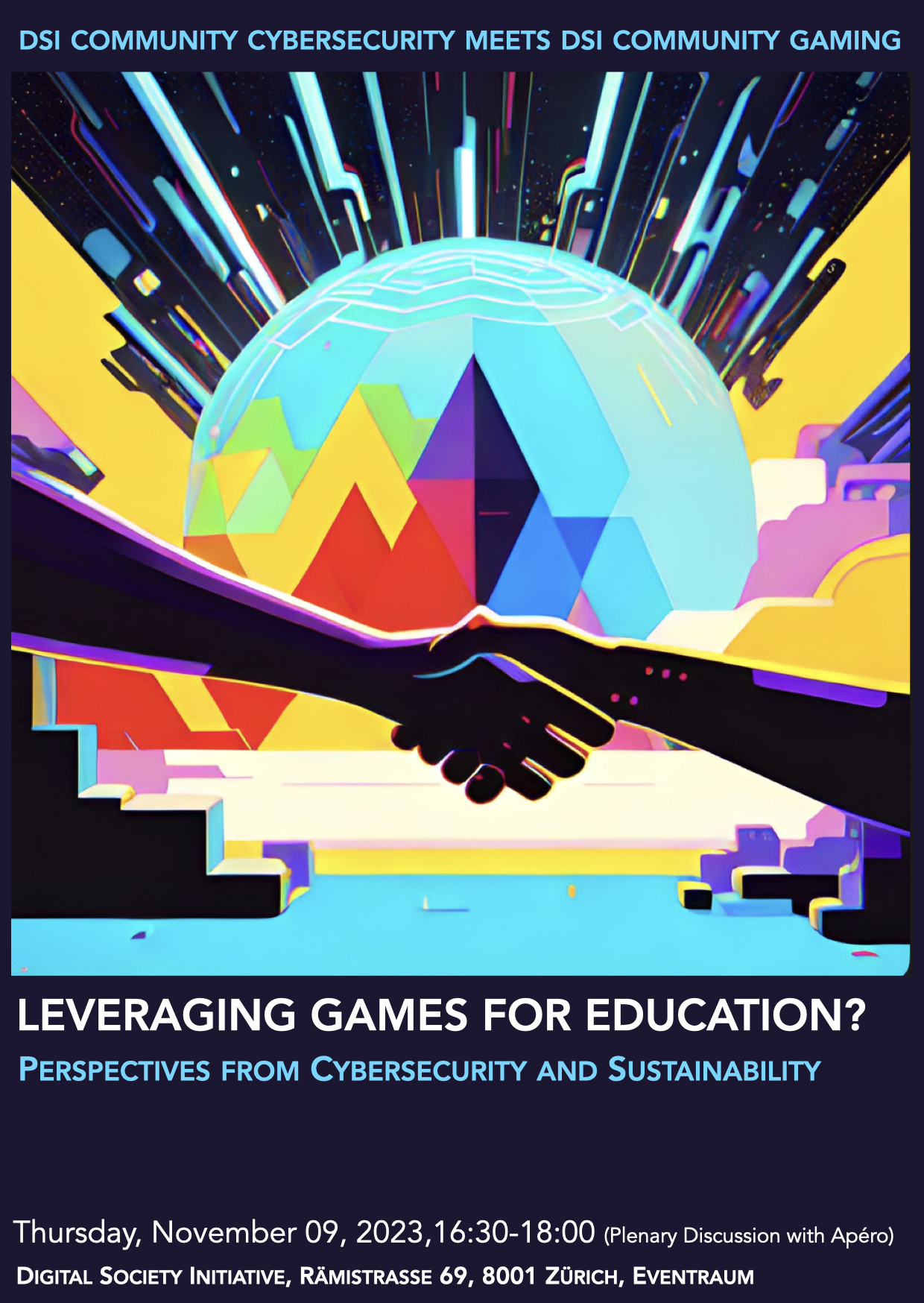Play is an essential human experience or, as Schiller put it,
Because, to put it bluntly, man only plays when he is fully human, and he is only fully human when he plays.
Source: Schiller, F., Theoretische Schriften. Über die ästhetische Erziehung des Menschen in einer Reihe von Briefen, 1793-1794. Fünfzehnter Brief
Games have great potential for changing attitudes, risk perception, knowledge, and behavior in complex fields such as cybersecurity. The Switch escape room game “Hack the Hacker” has, for example, shown promising effects (a) to demystify hackers, (b) to empower participants, and (c) to improve attitudes towards IT specialists and IT security. The Event “Leveraging games for Education” revealed some key take aways and challenges as well as hands-on advice on building your own game.

Key take aways:
- Target groups are crucial! Receive feedback early and frequently from the people you are creating the game for.
- Determine the purpose of your game! Whether it may be the change of attitude, risk perception, knowledge, or behavior, it is important to align the game mechanics and aesthetics with the purpose and target group in mind.
- Ensure support from administrators such as teachers or managers! It is not only enough for your target group to enjoy the game, but for those in charge to enable its implementation.
- There is no one-size-fits-all which makes game development a time- and resources-intense endeavor.
Challenges that should be addressed in the future:
- How to measure the long-term effectiveness of serious games?
- How to make the implementation of serious game scalable?
How to start developing your own game:
- The iterative game design process encompassing conceptualization, paper prototyping, gametesting, and evaluating can provide guidelines about how to approach game development: https://bit.ly/47ANcXf
- To understand the interaction between any kind of media and the user/viewer/recipient, refer to the MDA Framework which outlines the game Mechanics (created by the game designer), the game Aesthetics (perceived by the gamer), and the Dynamics emerging from their interaction: https://bit.ly/47xebCR
- For creating a Narrative Mechanics, a Paper Prototype, Games & Rules or Stories for Games, check this link: https://gamelab.zhdk.ch/
- Just two examples of Software to make your own game:
Thank you @mela, @sonja, and @Fabio for sharing your experience and knowledge with us, and @hiloko, @mel, @Leyla for organizing and coordinating the event.








